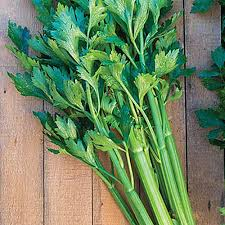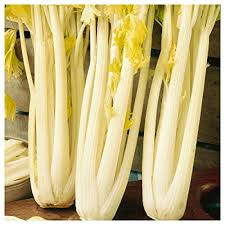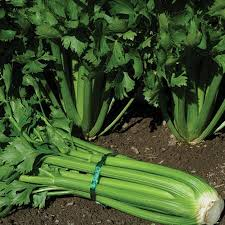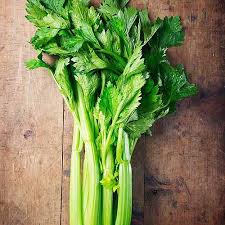Homegrown celery (Apium graveolens) offers a flavor and crunch that supermarket celery just can’t match. While it’s easy to assume there’s only one type of celery, several cultivars stand out, each with unique characteristics. Whether you’re seeking early harvests, heat resistance, or a different flavor profile, there’s a celery variety for every gardener.
Celery belongs to the Apiaceae family, which includes carrots, and is typically grown as an annual in USDA Hardiness Zones 4-10. While many cultivars thrive in these zones, some are better suited to warmer climates (Zones 8-10). Let’s explore the best varieties for your garden!
1. Conquistador
Perfect for impatient gardeners, Conquistador is a hybrid of ‘Pascal’ that matures in just 80 days in warmer zones. For cooler climates, it takes about 115 days to mature. This variety is slow to bolt, heat-resistant, and tolerates mild drought. While it isn’t self-blanching, you can blanch it yourself for pale stalks, or enjoy the bold, unblanched flavor.

2. Giant Red
An heirloom dating back to the 19th century, Giant Red has striking reddish-purple stalks that turn pink when cooked. Cold-hardy and ideal for cooler climates, it grows up to 2 feet tall. The flavor is stronger and heartier than traditional green celery. Harvest in just 85 days and enjoy its visual and culinary appeal.
3. Golden Pascal
This heirloom from France produces yellow-green stalks with a mild, stringless flavor. Golden Pascal matures in 115 days and is cold-tolerant, requiring no blanching. It’s perfect for gardeners who prefer a milder celery taste. The stalks grow up to 20 inches tall, offering both quality and quantity.
4. Golden Self-Blanching
Introduced in 1886, Golden Self-Blanching is a convenient choice for those who dislike blanching celery. The stalks turn golden in fall, offering a softer, milder flavor. Ready in about 105 days, this variety grows to nearly 2 feet and produces juicy, thick stalks with deep ribs, perfect for those who enjoy tender celery.

5. Monterey
Monterey is an early-maturing hybrid, ideal for warmer climates. It matures in just 80 days and is known for its dark-green, flavorful stalks. This hybrid is resistant to bolting, making it a great choice for gardeners in hot regions. Monterey is widely cultivated in southern Europe, making it a reliable option for your garden.
6. Nan Ling Cutting
This variety is actually Chinese celery, known for its thin, light-green stalks. Nan Ling Cutting is perfect for short growing seasons, maturing in just 60 to 90 days. The stalks are harvested as they grow, making it ideal for adding to Asian soups and salads. Don’t forget to use its fragrant leaves in your dishes as well!
7. Tall Utah
Introduced in 1953, Tall Utah is a popular heirloom known for its crisp, stringless stalks. This variety matures in 100-125 days and grows stalks up to 12 inches. It’s perfect for fresh snacking or adding to salads. There’s also an improved version with deeper ribs and a sweeter flavor, making it a great choice for picky eaters.

8. Tango Hybrid
Tang Hybrid is a tall, extra-crunchy variety that matures in just 85 days. It’s perfect for gardeners looking for a high-yield, heat-resistant cultivar. This variety is resistant to fusarium wilt and can be planted closer together (6-8 inches apart), resulting in a larger, heartier crop. Great for beginners, Tango Hybrid is a reliable choice.
9. White Plume
If you’re drawn to unique, historical varieties, White Plume is a must. This dwarf heirloom dates back to 1884 and produces delicate, white stalks with a plume of lacy green leaves. Known for its sweet, crisp flavor, it’s a self-blanching variety, and while it matures in 80-90 days, it doesn’t keep long after harvest. White Plume was once a popular choice for fine dining in the 19th century and remains a charming addition to any garden.
Final Thoughts on Growing Celery
Celery adds a refreshing crunch to soups, salads, and stews. It’s also a key ingredient in the “Holy Trinity” of Cajun and Creole cooking. With so many varieties available, you can easily find one that suits your growing conditions and flavor preferences.
Ready to grow your own celery? Follow our growing guide for tips on starting your crop and enjoy fresh, homegrown celery straight from the garden. Whether you’re snacking on crunchy stalks or using them in your favorite recipes, your homegrown celery will be a rewarding addition to your garden!
